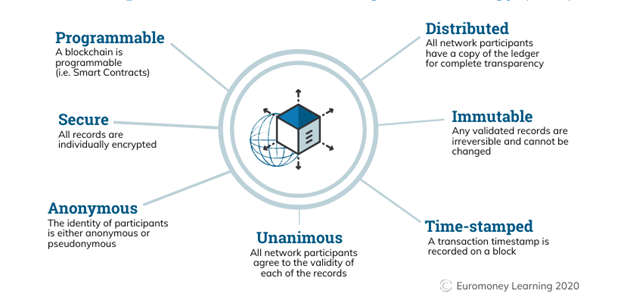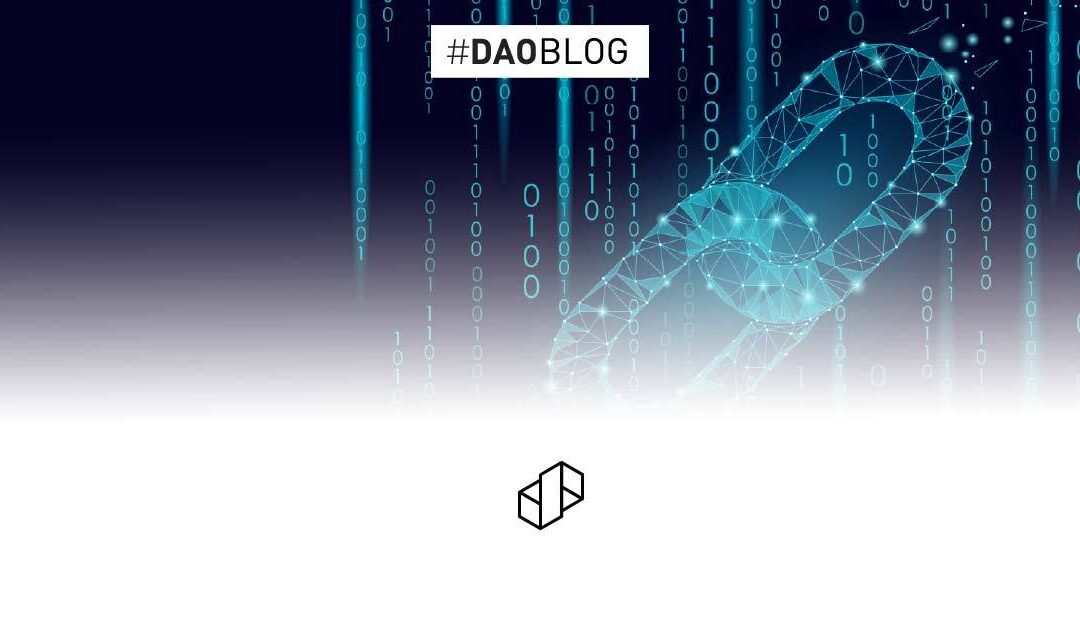If you have followed investing or technology over the last few years, you may have come across the term “blockchain.”
The core concept regarding blockchain is straightforward. It is a method of recording information or transactions that leaves no chance to change, hack or cheat the system. A blockchain is a type of database. Databases generally collect large amounts of information stored on a computer system. Large databases may even require a system of hundreds of computers working together in unison for the data to be accessible to multiple users.
So then, how is a database different from a blockchain?
A key difference between a traditional database and a blockchain is the way data is structured. A blockchain gathers information in groups, forming blocks. These blocks have limited storage capacities, and when that capacity is reached, they are chained onto the previously filed blocks, creating a chain of blog data. Hence, the name blockchain. All blockchains are databases. However, not all databases are blockchains.
The attributes of blockchain technology

Blockchain can be decentralized.
Most blockchains that exist today are decentralized. To explain further, I will be using the example of the blockchain implemented by Bitcoin. Bitcoin requires a system of computers to store its database. This is specifically a blockchain that stores every Bitcoin transaction ever made. This system of computers does not exist under a single roof. Instead, they are connected via the Internet and are operated by individuals or a group of individuals. These computers are referred to as nodes.
In this example, Bitcoin’s blockchain is used in a decentralized way.
Note: Private, centralized blockchains also exist; however, they are not that common.
In a blockchain, each node has access to the stored data since the creation of the blockchain. In Bitcoin’s case, it is the entire transaction history of every Bitcoin that exists.
If a single node has an error, it can use reference points from the other nodes and correct itself. Consequently, no node can alter itself within the network. As a result, the history of transactions in each block that make up Bitcoin’s blockchain is irreversible. This system helps to establish an exact and transparent order of events. If anyone were to make any changes to the data, a majority would be required to agree on the said changes for them to be made, making sure the changes are in the best interest of the majority.
They are entirely transparent.
With Bitcoin’s blockchain, you can transparently view all the transactions that are being made. This means you can track Bitcoin regardless of who owns it. Previously, exchanges have been hacked, and hackers have stolen numerous Bitcoins. While the hacker may be entirely anonymous, Bitcoins can be easily traced, and if they are to be moved or spent, it would be known.
Talking of hackers, are blockchains secure?
Blockchains tend to be secure in more than one way. Blockchain blocks are always stored linearly and chronologically. That means that newer blocks are at the end of a blockchain. After a block has been added, it is complicated to change the information that the block holds. This is because each block has its own encryption and time stamp.
How does that impact security?
In the case of Bitcoin, if a hacker were to steal and alter a single Bitcoin, it would no longer align with the other copies. Once everyone else cross-references their copies against the altered one, they would find out that this one has been tampered with, and the altered copy would be discarded.
To be successful with such an attack, the hacker would have to alter 51% of the copies to gain a majority and complete the hack. However, that would require an unattainably large amount of money and resources. Even if one had the required capital and resources, once a copy is altered, other network members would see the alterations being made to the copies and then would be able to act accordingly.
Bitcoin vs other Blockchains
Blockchain technology came into being in 1991 when two researchers wanted to implement a system of documents where timestamps could not be tampered with. Bitcoin was its first real-world application in 2009.
The critical point to understand here is that Bitcoin uses blockchain to record its transactions. In contrast, a blockchain can record any information and not only currency transactions. It can be used in an election, product inventories, and much more. Some of the world’s biggest corporations have started using blockchains. They include Walmart, Pfizer, Unilever, and numerous others. For example, IBM has created its Food Trust blockchain to record the journey food products take to get to its location.
What does the future hold for blockchain?
Blockchain-based projects have received their fair share of scrutiny since their inception. However, blockchain adoption is more widespread now than it has ever been.
With various practical applications for blockchains, the new system is picking up pace as more businesses and governments try to make their operations more accurate, efficient, secure, and cheap with fewer middlemen.
To read more blogs, visit our blogs page here.

Esa Imran
Digital & Communications Specialist


 Book a Meeting
Book a Meeting